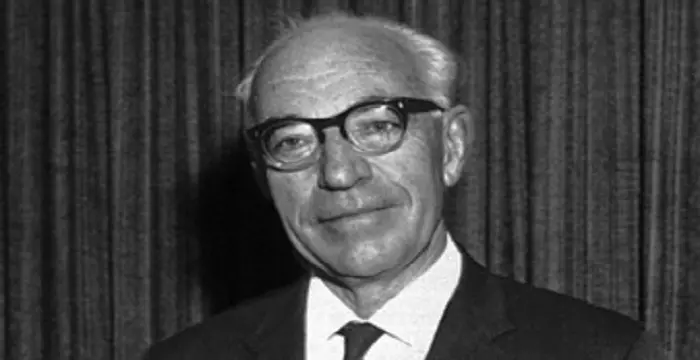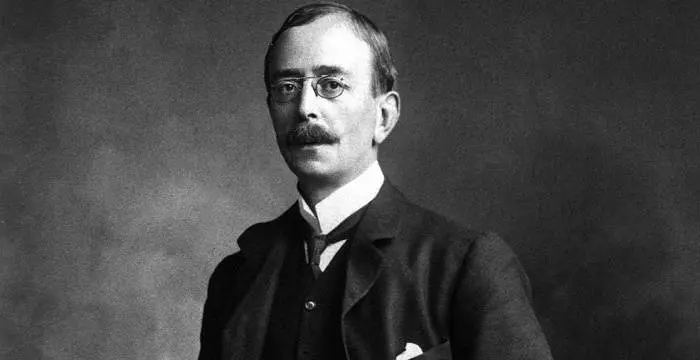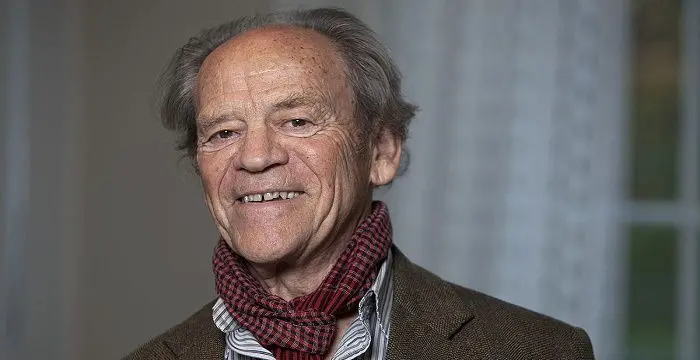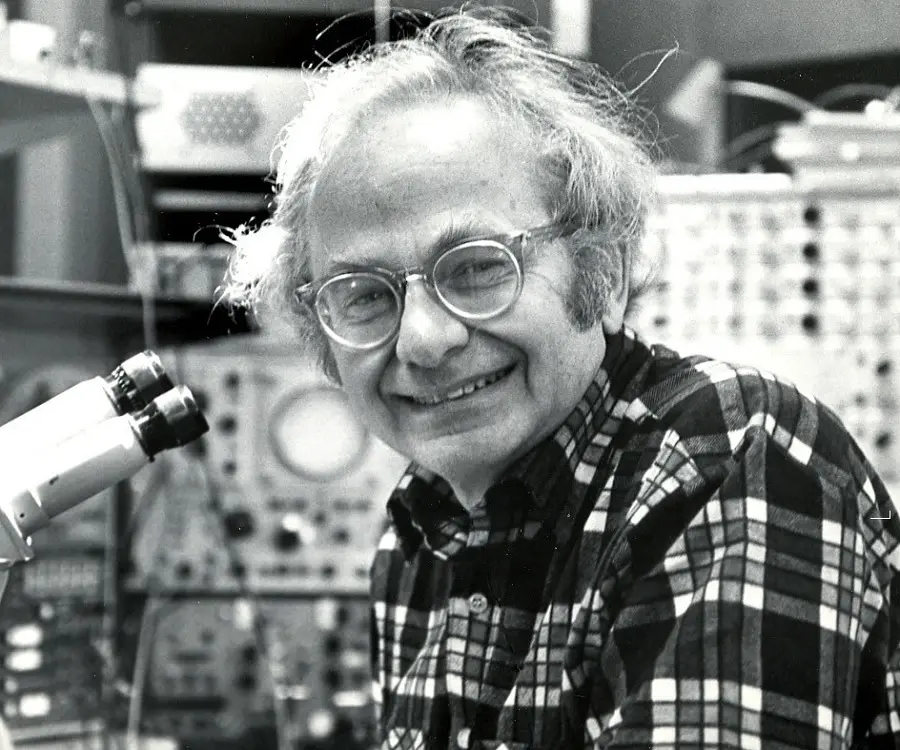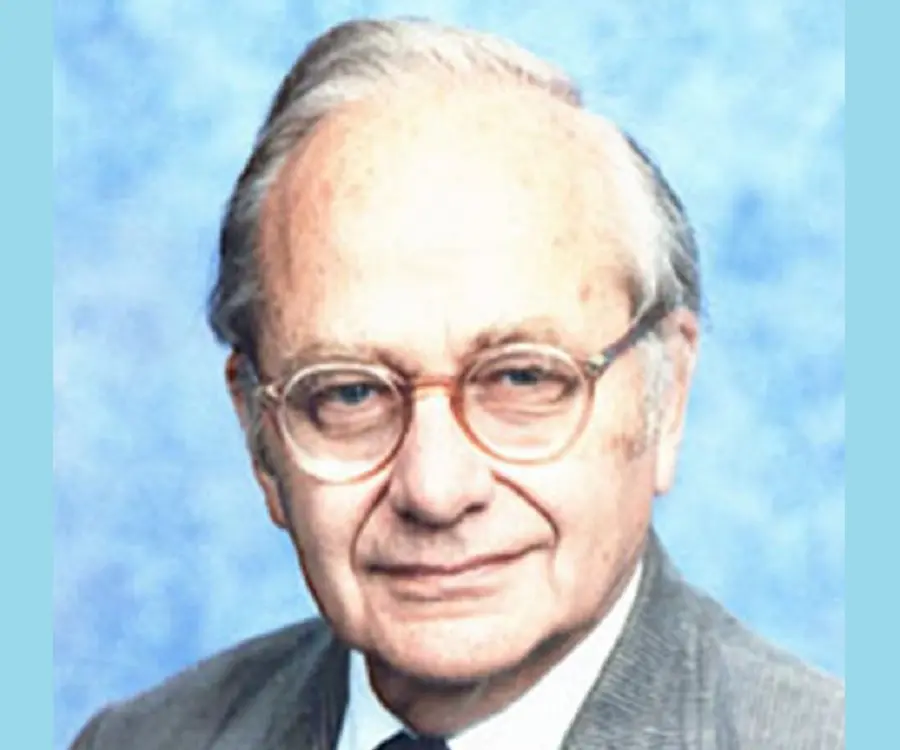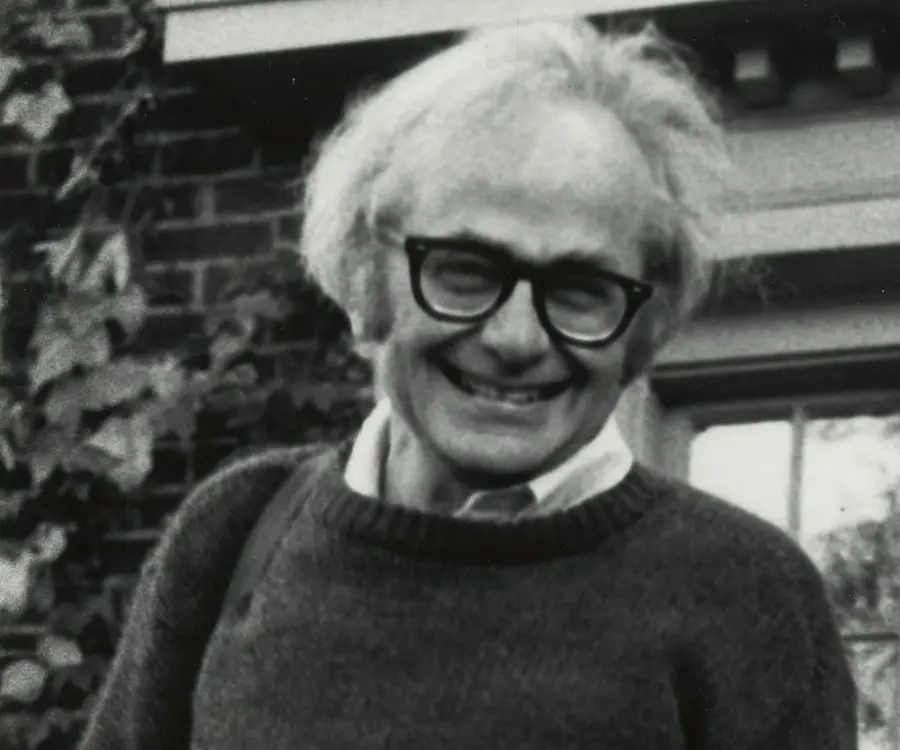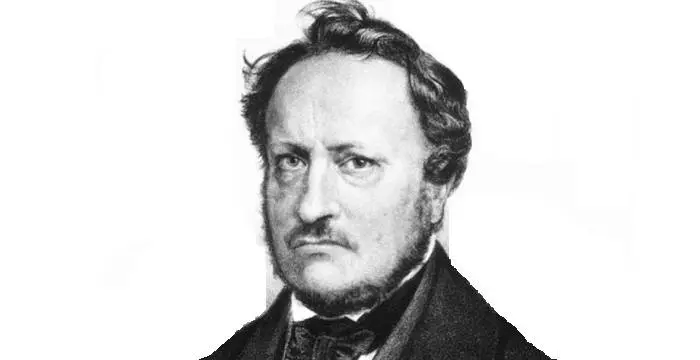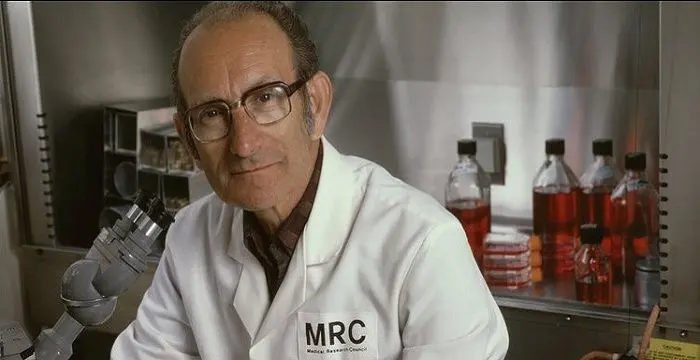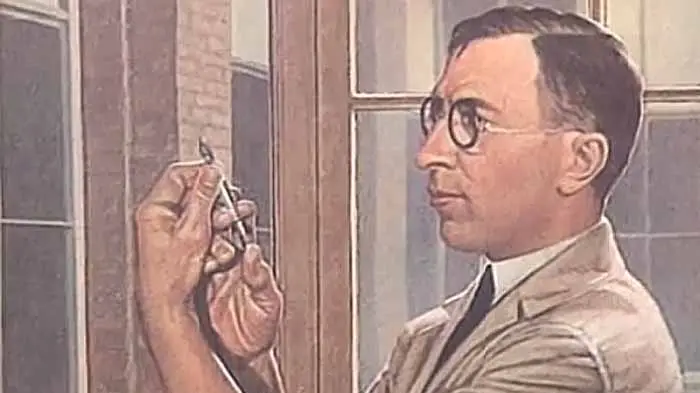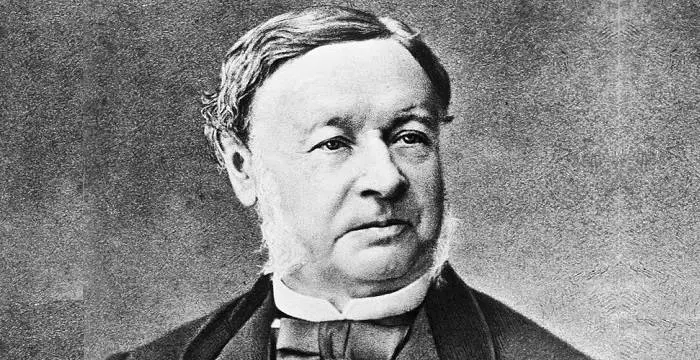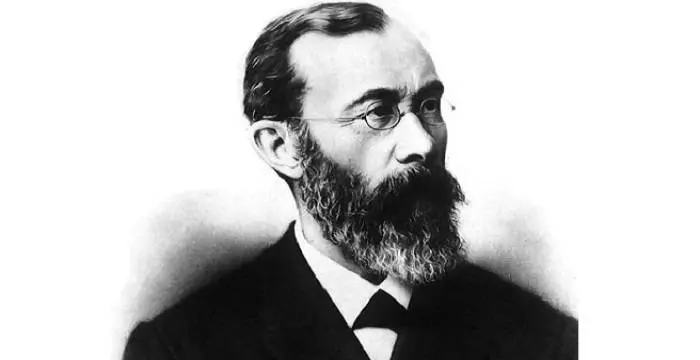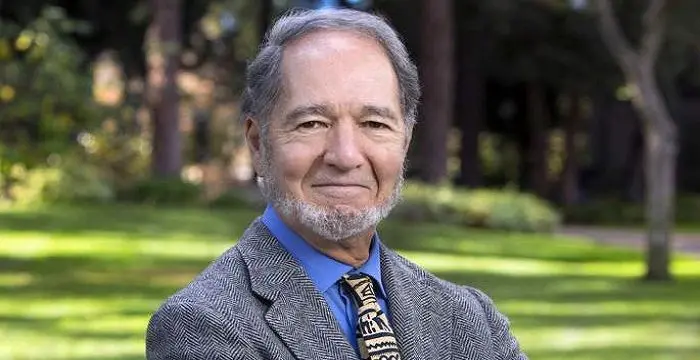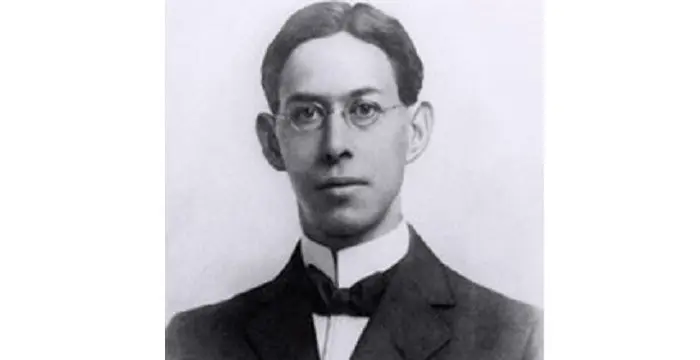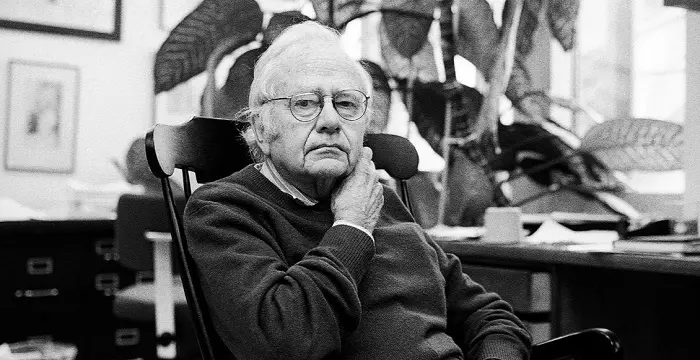
David H. Hubel - Neurophysiologist, Timeline and Life
David H. Hubel's Personal Details
David Hunter Hubel was a Nobel Prize winning Canadian neurophysiologist noted for his work on the structure and function of the visual cortex
| Information | Detail |
|---|---|
| Birthday | February 27, 1926 |
| Died on | September 22, 2013 |
| Nationality | American |
| Famous | Scientists, Medical Scientists, Physiologists, Neurophysiologist |
| Spouses | Ruth Izzard (m. 1953) |
| Birth Place | Windsor, Canada |
| Gender | Male |
| Sun Sign | Pisces |
| Born in | Windsor, Canada |
| Famous as | Neurophysiologist |
| Died at Age | 87 |
// Famous Neurophysiologist
Sir John Eccles
Sir John Carew Eccles was a neurophysiologist from Australia who was awarded the Nobel Prize in Physiology or Medicine. This biography profiles his childhood, life, career, research, achievements and timeline.
Charles Scott Sherrington
Charles Sherrington was a Nobel Prize winning English scientist who explained the function of neurons in the human body. To know more about his childhood, career, profile and timeline read on
Torsten Wiesel
Torsten Wiesel is a Nobel Prize winning Swedish neurophysiologist who was one of the co-recipients of the 1981 Nobel Prize in Physiology or Medicine. Check out this biography to know about his childhood, life, achievements, works & timeline.
David H. Hubel's photo
Who is David H. Hubel?
David Hunter Hubel was a Nobel Prize winning neurophysiologist noted for his work on the structure and function of the visual cortex. Born in Canada to American parents, he later became naturalized American citizen and served the US Army for around three years. He was assigned to the Neurophysiology Division of the Walter Reed Army Institute of Research as part of his military service. There he began working on primary visual cortex of cats, both in sleeping and wakeful condition and invented the tungsten microelectrode. On completion of the military service he joined Wilmer Institute and worked under Stephen Kuffler. There he collaborated with Torsten Wiesel to work on the relationship between the retina and the visual cortex. The partnership lasted for more than two decades. Meanwhile, they shifted to Harvard University, where they continued with their research, which earned the duo the coveted Nobel Prize. They later worked with kittens to throw light on cataract and defect in alignment in children’s eyes. He was also a successful academician and authored many distinguished books on visual system.
// Famous Scientists
Juliane Koepcke
Juliane Koepcke is a German-Peruvian biologist, who was the lone survivor among the 92 passengers and crew of the ill-fated LANSA Flight 508 that crashed in the Peruvian rainforest on 24 December 1971. Know more about her life in this biography.
Henry Cavendish
Henry Cavendish was a theoretical chemist and physicist, renowned for discovery of hydrogen and calculation of the mass of earth. To know more about his childhood, profile, timeline and career read on
Konstantin Tsiolkovsky
Konstantin Tsiolkovsky was a Russian rocket scientist and a pioneer of astronautics. This biography provides detailed information about his childhood, family, personal life, career, achievements, etc.
Childhood & Early Life
David Hunter Hubel was born on February 27, 1926, in Windsor, Ontario, Canada into a well-to-do family of Bavarian ancestry. However, both his parents were born and brought up in Detroit, USA. So, David, their only child, was Canadian by birth and American through his parents.
David’s paternal grandfather migrated to USA from Bavaria and made money by inventing the first procedure for producing gelatin pill capsules on mass scale. His father, Jesse Hunter Hubel, was a chemical engineer, who at the time of David’s birth, was employed at the Windsor Salt Company.
David’s mother, Elsie M. Hunter Hubel, had a keen interest in electronics. However, she never studied the subject and lived with that regret. She compensated that by allowing David to pursue his line of interest.
When David was three years old, the family moved to Montreal. There at the age of six, he was admitted to Strathcona Academy in Outremont. When the time came, he chose Latin as additional subject, because it was considered appropriate for future medical studies while those who took biology were considered dumb.
From his father, David inherited an interest in chemistry and from early childhood, he often carried out experiments in the basement of his home. One of them made such loud bang that it brought the city police to his door. Electronics was another of his favorite subject. He also learnt to play the piano well.
David passed out from school in 1943 and then enrolled at the University of McGill with honors in Mathematics and Physics, receiving his B.S. degree in 1947. He liked the experience there because it involved solving problems; there was not much to learn by heart.
Subsequently, he enrolled at Medical School at the McGill University. Because he did not learn biology at school, he had a tough time there; but liked biochemistry. By the second year, he also grew an interest in brain.
From then onwards, he spent the summer holidays at Montreal Neurological Institute, and worked in the laboratory of neurologist Herbert Jasper. Here he became fascinated with nervous system. Later, he also began to enjoy clinical medicine.
David H .Hubel received his M.D. in 1951 and then did one year of internship at McGill. It was followed by one year of neurology residency at Montreal Neurological Institute and then for one year, he worked with Jasper on clinical electroencephalography (EEG) under fellowship.
Career
In 1954, Hubel moved to the United States of America and joined Johns Hopkins University School of Medicine as an assistant resident in neurology. In 1955, before he could establish himself, he was drafted in the United States army.
Fortunately, he was assigned to the Neurophysiology Division of the Walter Reed Army Institute of Research as part of his military service. Here he received the mentorship of Michelangelo Fuortes and also had the first opportunity to do research on his own.
He first began to work on spinal cord, which prepared him for his later works on neurophysiology. However, his main project was to compare the spontaneous firing of single cortical cells in sleeping and waking cats.
To record the electrical impulses of the nerve cells, he first invented a tungsten microelectrode, which took him one year. He then placed it in the visual cortex area of the brain and went on to record sleeping as well as freely moving cats. Subsequently, he found that neuronal activity depended upon the level of arousal.
From the reaction of his subjects during wakeful hours, Hubel also realized that it was possible to study how brain operates during the visual process. However, before he could proceed much, his military service was over and in 1958, he went back to Johns Hopkins University School of Medicine.
Huber first joined the laboratory of Vernon Mountcastle. But, as the laboratory was undergoing renovation at that time, he was invited by Stephen Kuffler to join him at his laboratory at Wilmer Institute, also at Johns Hopkins.
At Kuffler’s laboratory Huber met Torsten Wiesel. Under Kuffler’s direction, the two scientists began to work on the relationship between the retina and the visual cortex. Very soon, they formed a team, which lasted for twenty-two years. Kuffler remained their lifelong friend and also the toughest critic.
In 1959, Kuffler moved to Harvard Medical School, where he joined the Department of Pharmacology under Otto Krayer. Huber and Wiesel also went with him and in the same year began a novel experiment, which contributed greatly to our knowledge of sensory processing.
They inserted a microelectrode into the primary visual cortex of an anesthetized cat and then projected patterns made out of light and darkness on a screen placed in front of it. At the end, they were able to establish how visual system creates complex representations out of simple stimuli.
In 1962, they published the result of the above mentioned experiment. In it they described various classes of visual neurons and their columnar organization. They also showed that neurons within one column preferred similar orientations and that cortical neurons had ocular dominance and received input from each eye.
When in 1964, the Department of Neurobiology was officially established at Harvard University, Kuffler became its Chairman and by following year, Hubel was appointed as the Professor of Physiology at the same department.
In 1967, Huber succeed Kuffler as the Chairman of the department and in 1968, he was elected as the George Packer Berry Professor of Neurobiology. All along, he and Wiesel carried on research work first with cats and then with monkeys.
Meanwhile, they had started working on ocular dominance columns, which are stripes of neurons in the visual cortex. They first discovered it in cats; later they used kittens to perform the experiments and found that these columns were severely disrupted when one eye was kept shut for two months.
They also found that the neuronal connections were largely present before the eyes were opened and that their organization deteriorated if the subject was deprived of visual input during a critical period after birth. These findings had great impact on the treatment of cataract or disorder of alignment in children.
Major Works
Hubel is best remembered for his work on the nerve impulses, which flow from retina to the sensory and motor centers in the brain. By implanting tiny electrodes in the brain of anesthetic cats he, along with Wiesel, proved that specific nerve cells are responsible for specific types of visual comprehension.
Hubel had also authored number of books. They include:‘The Visual Cortex of the Brain’ (1963), and ‘Eye, Brain, and Vision’ (1988). Moreover, he co-wrote ‘Brain Mechanisms of Vision’ (1979) and ‘Brain and Visual Perception: The Story of a 25-Year Collaboration’ (2004) with Torsten Wiesel and ‘The Brain’ (1984) with Francis Crick.
Awards & Achievements
In 1969, Hubel and Wiesel co-received the Dickson Prize, awarded by Carnegie Mellon University, for their work on neurophysiology of vision.
In 1978, the Hubel-Weisel duo received Louisa Gross Horwitz Prize for Biology or Biochemistry from Columbia University for their outstanding contribution in basic research in the fields of biology or biochemistry.
In 1981, the Nobel Prize for Physiology or Medicine was shared between David Hunter Hubel, Torsten Nils Wiesel and Roger Wolcott Sperry. Hubel and Wiesel received the honor "for their discoveries concerning information processing in the visual system". While they shared half the prize money the other half went to Sperry.
In 1982, he was elected as a Foreign Member of Royal Society. Then from 1988 to 1989 he was elected as the president of the Society for Neuroscience.
Personal Life & Legacy
In 1953, Hubel married Shirley Ruth Izzard. For the first two years of their married life Hubel did not have any income and it was Ruth, who stood by her struggling husband and provided all the necessary support. The couple had three children; Carl, Eric and Paul.
David and Ruth remained married till her death in 2013. Soon after the incidence, Hubel’s health also deteriorated. He died on September 22, 2013 from kidney failure at Lincoln, Massachusetts, at the age of 87.
// Famous Medical Scientists
Johannes Peter Müller
Johannes Peter Müller was a German physiologist and comparative anatomist. Check out this biography to know about his childhood, life, achievements, works & timeline.
Cesar Milstein
Cesar Milstein was an Argentinian biochemist who received the Nobel Prize for his discovery of monoclonal antibody. Explore this biography to get details about his life, career and scientific discoveries.
Frederick Banting
Frederick Banting was a Canadian medical scientist and physician who won the Nobel Prize for discovering insulin. Check out this biography to know about his childhood, family life, achievements and other facts related to his life.
David H. Hubel's awards
| Year | Name | Award |
|---|---|---|
Other | ||
| 0 | 1981 - Nobel Prize in Physiology or Medicine . 1978 - Louisa Gross Horwitz Prize | |
David H. Hubel biography timelines
- // 27th Feb 1926David Hunter Hubel was born on February 27, 1926, in Windsor, Ontario, Canada into a well-to-do family of Bavarian ancestry. However, both his parents were born and brought up in Detroit, USA. So, David, their only child, was Canadian by birth and American through his parents.
- // 1943 To 1947David passed out from school in 1943 and then enrolled at the University of McGill with honors in Mathematics and Physics, receiving his B.S. degree in 1947. He liked the experience there because it involved solving problems; there was not much to learn by heart.
- // 1951David H .Hubel received his M.D. in 1951 and then did one year of internship at McGill. It was followed by one year of neurology residency at Montreal Neurological Institute and then for one year, he worked with Jasper on clinical electroencephalography (EEG) under fellowship.
- // 1953In 1953, Hubel married Shirley Ruth Izzard. For the first two years of their married life Hubel did not have any income and it was Ruth, who stood by her struggling husband and provided all the necessary support. The couple had three children; Carl, Eric and Paul.
- // 1954 To 1955In 1954, Hubel moved to the United States of America and joined Johns Hopkins University School of Medicine as an assistant resident in neurology. In 1955, before he could establish himself, he was drafted in the United States army.
- // 1958From the reaction of his subjects during wakeful hours, Hubel also realized that it was possible to study how brain operates during the visual process. However, before he could proceed much, his military service was over and in 1958, he went back to Johns Hopkins University School of Medicine.
- // 1959In 1959, Kuffler moved to Harvard Medical School, where he joined the Department of Pharmacology under Otto Krayer. Huber and Wiesel also went with him and in the same year began a novel experiment, which contributed greatly to our knowledge of sensory processing.
- // 1962In 1962, they published the result of the above mentioned experiment. In it they described various classes of visual neurons and their columnar organization. They also showed that neurons within one column preferred similar orientations and that cortical neurons had ocular dominance and received input from each eye.
- // 1964When in 1964, the Department of Neurobiology was officially established at Harvard University, Kuffler became its Chairman and by following year, Hubel was appointed as the Professor of Physiology at the same department.
- // 1967 To 1968In 1967, Huber succeed Kuffler as the Chairman of the department and in 1968, he was elected as the George Packer Berry Professor of Neurobiology. All along, he and Wiesel carried on research work first with cats and then with monkeys.
- // 1969In 1969, Hubel and Wiesel co-received the Dickson Prize, awarded by Carnegie Mellon University, for their work on neurophysiology of vision.
- // 1978In 1978, the Hubel-Weisel duo received Louisa Gross Horwitz Prize for Biology or Biochemistry from Columbia University for their outstanding contribution in basic research in the fields of biology or biochemistry.
- // 1981In 1981, the Nobel Prize for Physiology or Medicine was shared between David Hunter Hubel, Torsten Nils Wiesel and Roger Wolcott Sperry. Hubel and Wiesel received the honor "for their discoveries concerning information processing in the visual system". While they shared half the prize money the other half went to Sperry.
- // 22nd Sep 2013David and Ruth remained married till her death in 2013. Soon after the incidence, Hubel’s health also deteriorated. He died on September 22, 2013 from kidney failure at Lincoln, Massachusetts, at the age of 87.
// Famous Physiologists
Theodor Schwann
Theodor Schwann was a German physiologist who discovered the Schwann cells in the peripheral nervous system. This biography of Theodor Schwann provides detailed information about his childhood, life, achievements, works & timeline.
Wilhelm Wundt
Wilhelm Wundt was a renowned doctor who conducted pioneering studies on experimental psychology. To know more about his childhood, career, profile and timeline read on
Charles Best
Charles Best was a great scientist and a renowned physiologist who is remembered for being the co-discoverer of insulin. Read this biography to learn about his profile, childhood, life and timeline.
Johannes Peter Müller
Johannes Peter Müller was a German physiologist and comparative anatomist. Check out this biography to know about his childhood, life, achievements, works & timeline.
Jared Diamond
Jared Mason Diamond is an American scientist and author reputed for his highly acclaimed and popular science books.
Joseph Erlanger
Joseph Erlanger was a renowned American physiologist who won the Nobel Prize in Medicine in 1994. Check out this biography to know about his childhood, life, achievements, works & timeline.
David H. Hubel's FAQ
What is David H. Hubel birthday?
David H. Hubel was born at 1926-02-27
When was David H. Hubel died?
David H. Hubel was died at 2013-09-22
Which age was David H. Hubel died?
David H. Hubel was died at age 87
Where is David H. Hubel's birth place?
David H. Hubel was born in Windsor, Canada
What is David H. Hubel nationalities?
David H. Hubel's nationalities is American
Who is David H. Hubel spouses?
David H. Hubel's spouses is Ruth Izzard (m. 1953)
What is David H. Hubel's sun sign?
David H. Hubel is Pisces
How famous is David H. Hubel?
David H. Hubel is famouse as Neurophysiologist
